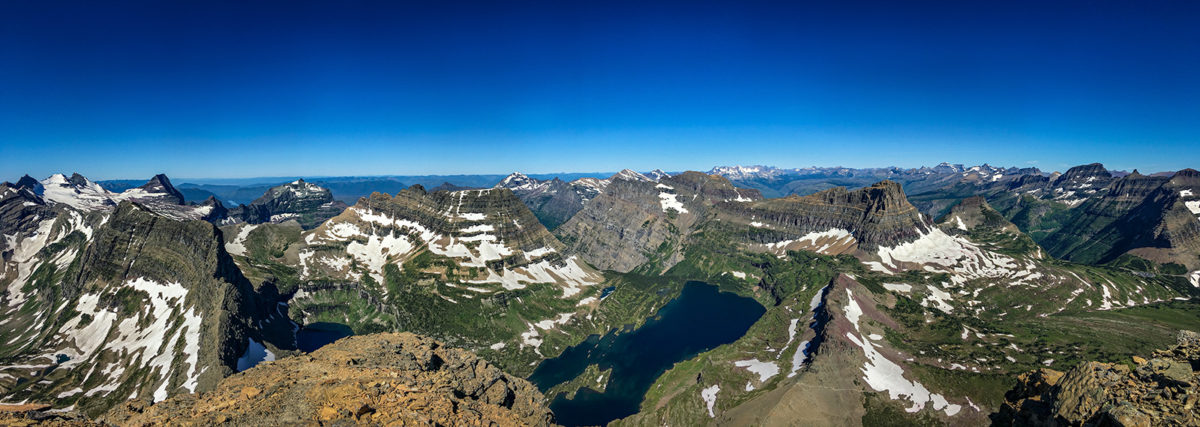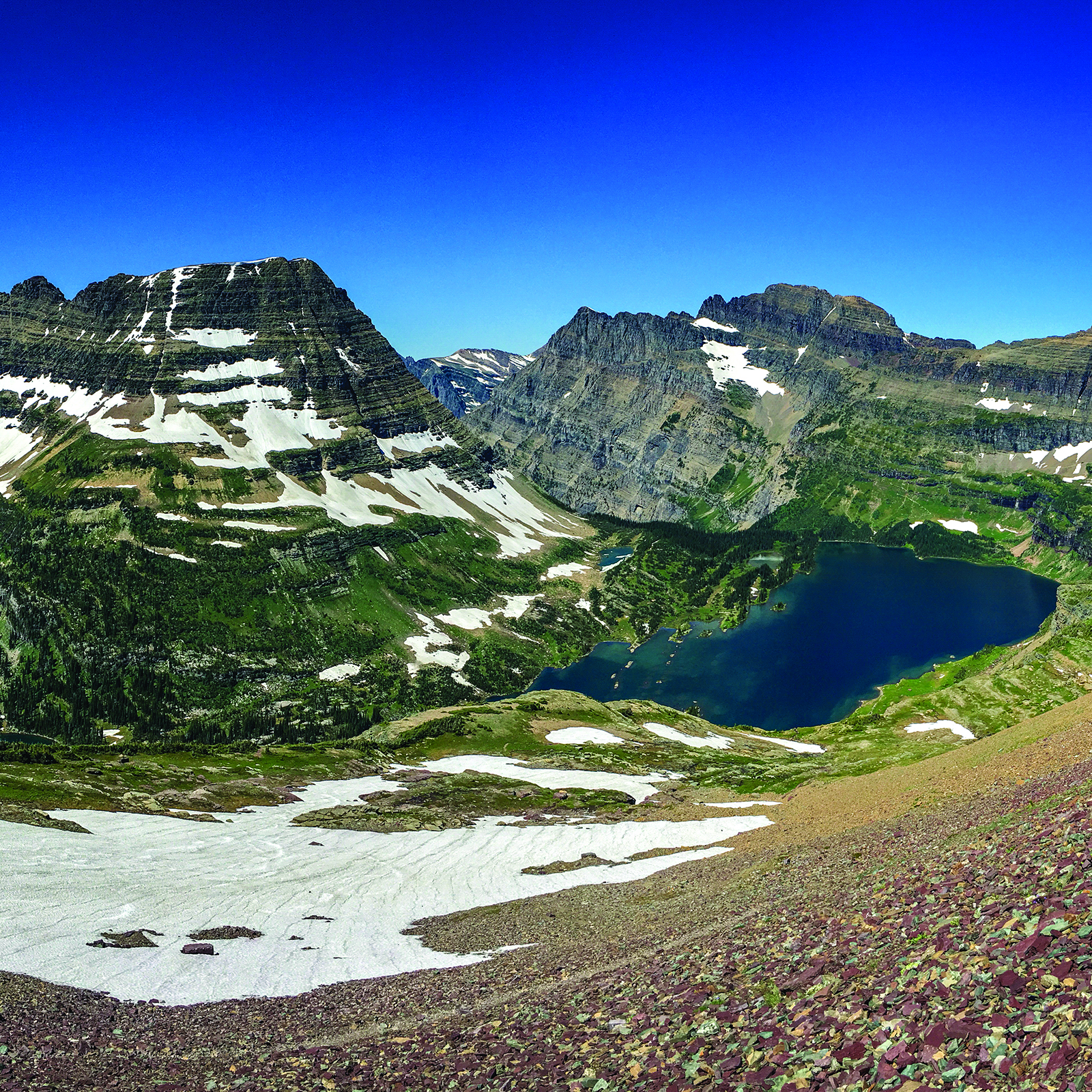The trail to Hidden Lake is one of the most heavily trafficked routes in Glacier National Park due to its location at Logan Pass, ease of passage with a mixture of pavement and boardwalk covering much of the route, and a low effort-high reward payoff.
The trail begins at the western side of the Logan Pass Visitor Center and takes tourists up to the Hidden Lake Overlook in just under a mile and a half, and only 500 feet of vertical gain, much of it in the way of steps along the boardwalk. That short trek brings visitors to one of the most iconic views of the park — the end of the trail looks down on the pristine Hidden Lake with the majestic Bearhat Mountain silhouetted above. Bearhat is one of the most easily recognized peaks in the park due to its flat-topped trapezoidal appearance.
The walk to the overlook is suitable for all ages and ability levels and offers panoramic views of the peaks surrounding Logan Pass — Reynolds Mountain, Clements Mountain, Mt. Cannon, Fusillade Mountain — as well as being a common area to view mountain goats, bighorn sheep and the occasional grizzly. Because Hidden Lake is a key spawning ground for fish, the trail is periodically closed throughout the summer due to high levels of bear activity. Be sure to check for closures and always pack bear spray.
It’s hard to stare across the vista toward the summit of Bearhat and not wonder what it would be like to stand atop the peak. Bearhat is 8,684 feet tall, and has more than 1,000 feet of prominence.

The peak was first summited by Norman Clyde in 1923 and is commonly hiked as a day trip from Logan Pass. The route is Class 2 and Class 3 (i.e. not overly difficult by Glacier standards) and ascends roughly 2,600 feet. Continuing past the Hidden Lake Overlook, the trail switchbacks down to the lakeshore, crosses an inlet and wraps around the western edge of the lake below the mountain.
After heading south along the lakeshore, begin climbing the slopes of Bearhat once the giant rift bisecting the mountain’s face is reached to get above the first band of cliffs. After that, continue working south and upward — J. Gordon Edwards notes in his classic book “A Climber’s Guide to Glacier National Park,” that the East Face of Bearhat can be climbed anywhere south of the great rift, with the climbing becoming easier and swifter the further south one goes.
As with any mountaineering in Glacier Park, be sure to fully research the route ahead of time, never hike alone and bring proper equipment which can include a helmet and a rope for those not fully comfortable with Class 3 terrain.
